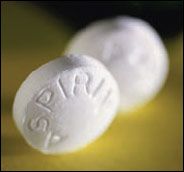Publication
Article
Pharmacy Times
Coagulation Counseling
Author(s):
Dr. Garrett is manager of the Health Education Center, Mission Hospitals, Asheville, North Carolina.
REVIEW PROVIDES RECOMMENDATIONS FOR USE OF DUAL ANTIPLATELET DRUGS

A recent review of all studies using thecombination of aspirin and clopidogrelsince 1950 is the source of new evidence-basedrecommendations regarding appropriateindications and length of therapy.The reviewincluded all studiesthat used the drug combinationfor any indication. Indicationsthat have been studied includecoronary artery disease (CAD),atheroscleroticischemic stroke,and atrial fibrillation. This combinationhas been beneficial inpatients with acute coronary syndrome(ACS) with or without percutaneouscoronary intervention (PCI), andin PCI patients without an acute event. Asmall but significant risk exists for increasedbleeding with dual antiplatelet therapy forthese indications. When used in patientswith a history of atherosclerotic ischemicstroke or for the prevention of cardioembolicstroke in patientswith atrial fibrillation,this combination has been shown toincreasebleeding, provide no clinicalbenefit,and increaseadverse outcomes.
Evidence exists to supportuse of aspirinin combinationwith clopidogrel for patientspresenting with all ACS types,as well as for patients presentingwith PCI for any indication.The treatment duration varies,but patients who have receivedstenting should receive at least1 year of combination therapy.No evidenceexists to support this combinationfor primary prevention of CAD oratherosclerotic ischemicevents, secondaryprevention of stable CAD, or preventionof cardioembolic stroke in patientswith atrial fibrillation.
AMITRIPTYLINE USE MAY INCREASE RISK OF VTE
A review of the medical records of 782 patients taking antidepressants found anincreased risk of venous thromboembolism (VTE) in patients who were taking amitriptyline.Case patients were aged 70 or younger with a first-time diagnosis of VTE.Upon finding the association with amitriptyline, the researchers further analyzed theamitriptylineusers by indication for the drug, postulating that use of amitriptyline forpain-related indications might signal some type of patient immobility that could contributeto an increased rate of VTE. The highest VTE risk was found in patients whoreceived the drug for depression or other psychiatric illnesses, however. No increasewas found in VTE risk associated with any other type of antidepressants.
RECURRENCE RATES SIMILAR FOR DVT AND PE
A review of the medical records of 1691 patients with deep vein thrombosis (DVT) or pulmonary embolus (PE) showed that the 3-year rate of recurrent venous thromboembolism (VTE) did not differ between the 2 groups of patients. The PE patients had a higher risk of death, however, than those with a DVT (35.3% vs 29.6%), and major bleeding increased the risk of recurrence and death in both groups.
Among the 549 patients with a pulmonary embolism, 31 (5.7%) had a recurrence, 75 (13.7%) had recurrent VTE, 82 (14.9%) experienced a major bleeding episode requiring transfusion, and 226 (41.7%) died during the follow-up period. Among 1142 patients who presented with a DVT, 64 (5.6%) had a subsequent PE, 217 (19%) had a recurrent VTE, 146 (12.8%) experienceda major bleeding episode, and 411 (36%) died during the follow-up period.
Compared with the DVT patients, the PE patients were more likely to have been hospitalized within 3 months, to have had surgery, to have been admitted to an intensive care unit, to have had an infection, or to have had congestive heart failure.
AIR POLLUTION ASSOCIATED WITH RISK OF DEEP VEIN THROMBOSIS

The results of a recent study suggest that long-term exposureto particulate air pollution is associated with altered coagulation functionand increased risk of deep vein thrombosis (DVT). Particulate air pollution is known to enhance coagulation and arterial thrombosis. The Italian and US authors examined the association between exposure to particulate matter of less than 10 µm in aerodynamic diameter (PM10) with DVT risk in 870 patients and 1210 controls, from the Lombardy region in Italy, who were examined between 1995 and 2005. They estimated exposure to PM10 in the year before DVT diagnosis (cases) or examination (controls) through area-specific mean levels obtained from ambient monitors.
A higher mean PM10 level in the year before the examination was associated with shortened prothrombin time (PT) in DVT cases and controls. Each increase of 10 µg/m3 in PM10 was associated with a 70% increase in DVT risk (odds ratio [OR] 1.70) in models adjusting for clinical and environmental covariates. The association between PM10 level and DVT risk was weaker in women (OR, 1.40), particularly in those using oral contraceptives or hormone therapy (OR, 0.97).







